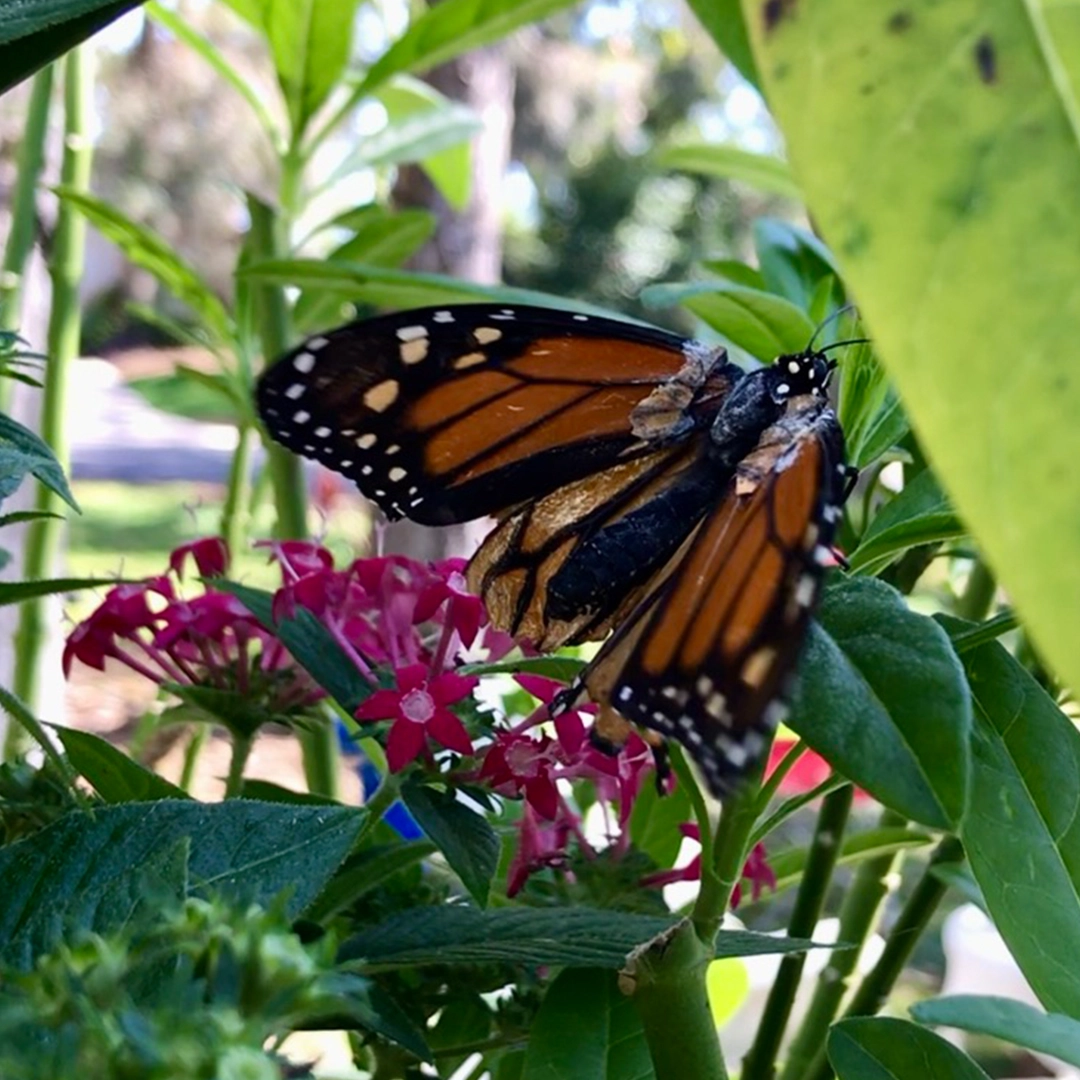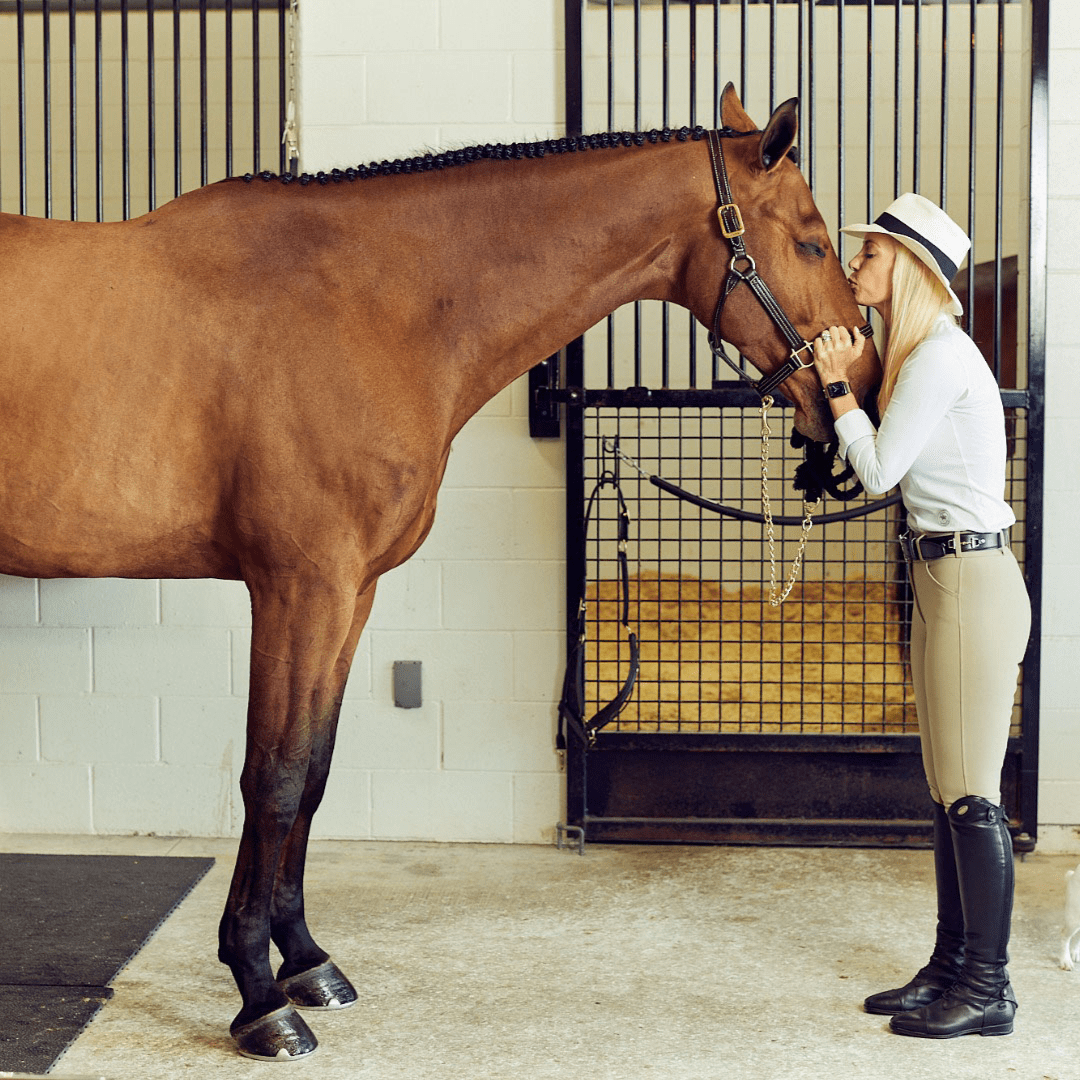by Eric Barton | March 2, 2020
Why Florida Is on the Front Lines to Save Honeybees
With one of the nation’s largest populations of honeybees, Florida has much resting on its fight to keep bees flying.
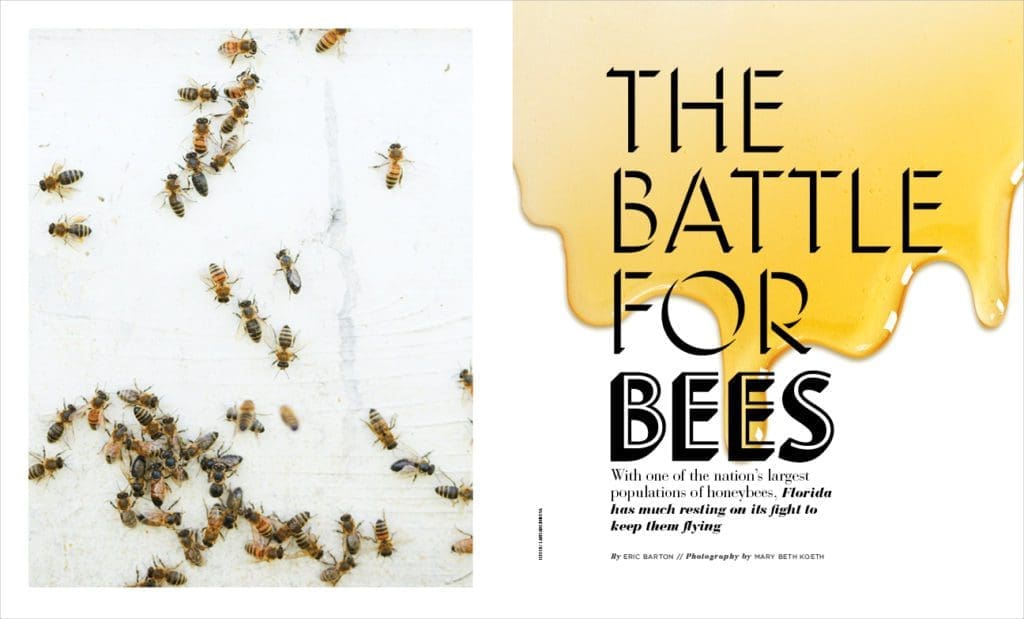
For as much as we understand about honeybees, about how they communicate, how they make decisions as a hive and how there’s one queen at the top who’s both in charge and a slave, the bees still occasionally do totally baffling things.
Like a hive in Fort Lauderdale, three years ago, that had grown on a palm frond. It was a terrible place to build a home. The weight of the comb and honeybees had weighed the frond down until it leaned against the trunk of the cabbage palm. With the frond the color of dead grass, it would likely fall someday soon, the hive with it, crushing everything the bees had built and exposing them to ants and lizards and all manner of creatures hungry for their sweet honey.
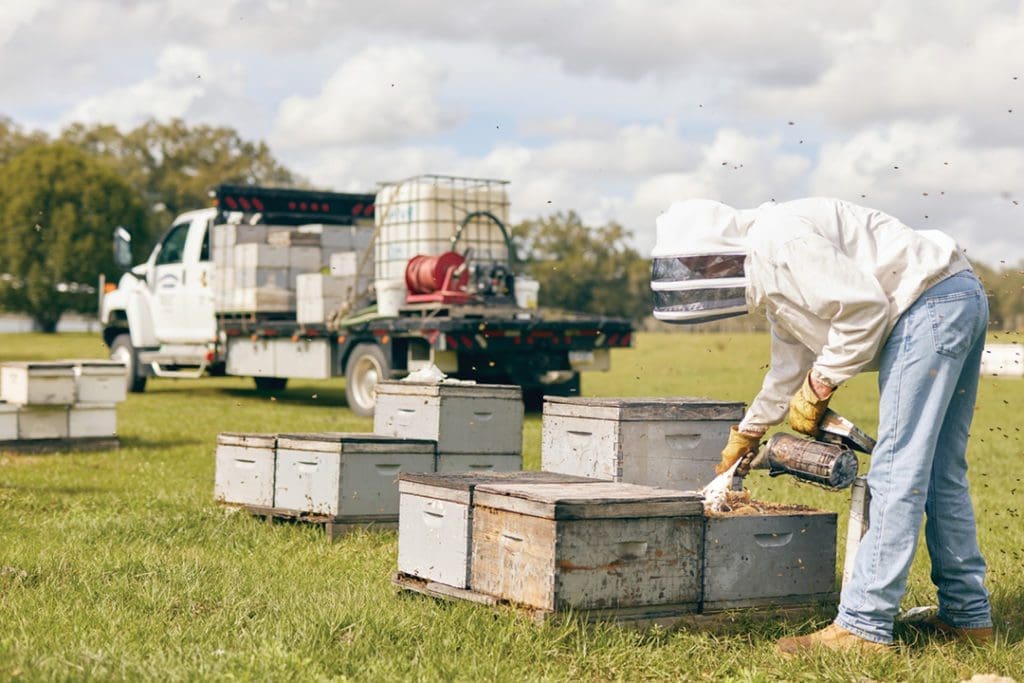
The three of us, volunteers for a nonprofit that aims to save threatened honeybees, were there to relocate the hive. It shared a piece of land with a Fort Lauderdale house under construction, and the workers had complained that the bees were divebombing them. If we couldn’t relocate them, the construction company would call out exterminators.
The goal with a relocation is to find the queen. Catch her in a device that looks like a hair clip and you can get the entire hive—all 80,000 bees or so—to follow her into a box that allows an apiarist to bring them to a new home.
But with the hive’s precarious perch 20 feet off the ground, we had to try something risky. With a power saw, we cut through the palm frond where it met the tree. The idea was to lower the hive—all 100 pounds or so—with ropes. But it slid out from the ropes as soon as it was cut, falling in a rush to the crabgrass below.
With their home crushed in the fall, the bees rose up like a frightening storm cloud, a cumulonimbus to be precise, one of those almost mushroom-shaped thunderclouds you see across the horizon of Central Florida. It was terrifying, a sound like a hundred thousand cell phones set to vibrate all going off at once, angry and haunting.
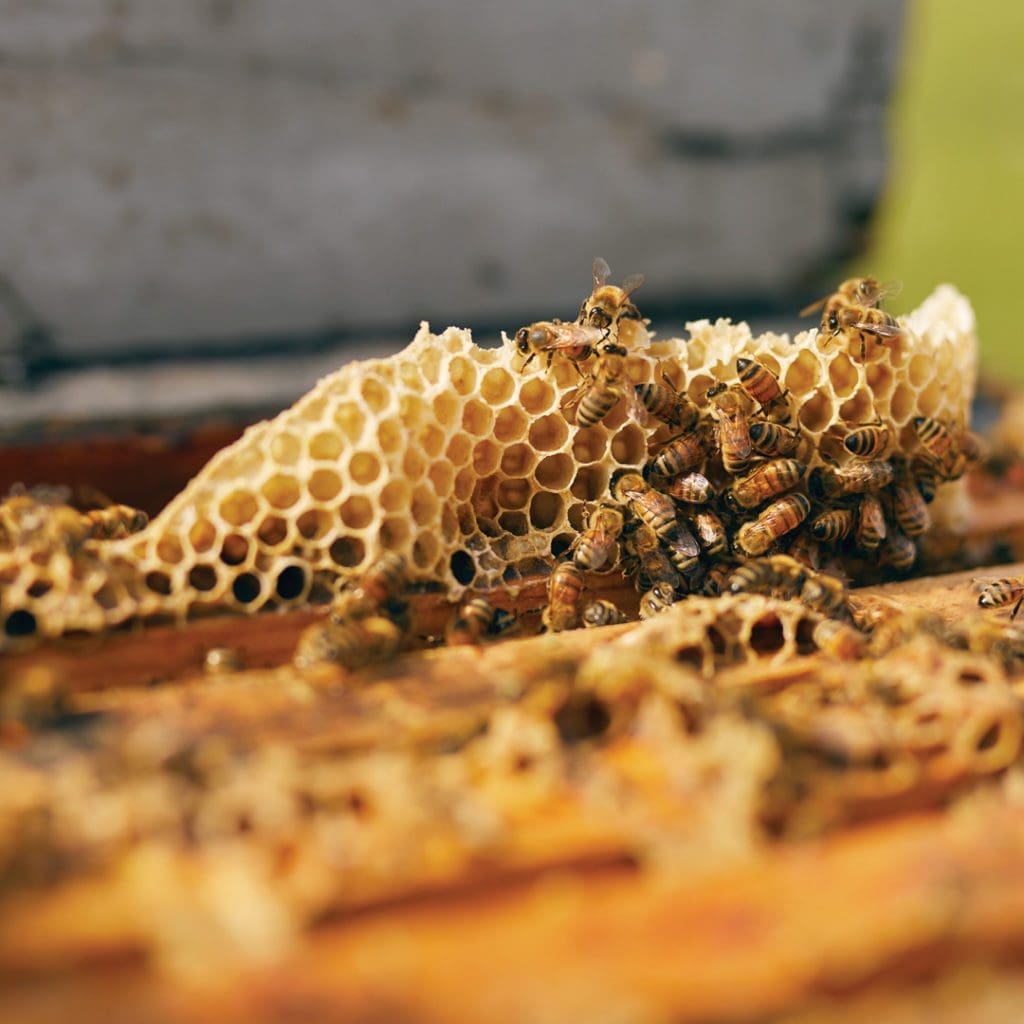
In suits that generally keep one sting-free, we spent another hour combing the ground for the queen, her elongated thorax distinguishing her. By following a horde of bees all crawling in the same direction, toward the queen, somebody finally spotted her, snatched her up safely in that hair clip device and dropped her in her new home.
That queen, and the hive that came with her, ended up in my yard. Like a few thousand Floridians in recent years, I became an urban apiarist, hoping to do my part to save the honeybee. Depending on who you ask, we hobbyists could either be the key to keeping bees from extinction or are simply not enough to hold off a flood of threats to honeybees.
Why should you care about a little bug that you might think is hell-bent on stinging you to death? It would be hard to overestimate just how important bees are, both to the production of so many of the foods we eat and to the state of Florida, home to a fifth of all of the country’s hives.
On these pages we’ve compiled all you need to know about the fight to save Florida bees and what you can do right now to keep them from disappearing.
WHAT YOU CAN DO FROM HOME TO HELP THE BEES
THE TROUBLE WITH BEES
You might know the Fort Meade restaurant John’s Drive-In for its chicken buckets and cowboy burgers, but it’s also a hangout for commercial beekeepers. They were all gathered around a table one afternoon three years ago when their conversation converged on a problem that nobody had spotted before.
Their colonies were dying, not from the tiny mites that have sapped the resources from hives for years now. It wasn’t colony collapse disorder, a mysterious phenomenon in which worker bees simply disappear, leaving the queen and her nurse bees to die as their resources deplete. This time, the hives were just dying, healthy one day and then a couple weeks later, ghost towns of dead bees.
“Somebody thought it was the stuff the state is spraying from planes. Somebody else thought it was what they’re putting in the water,” recalls Dave Hackenberg, one of the men sitting at the table. Those chemicals, used to kill mosquitoes, can cripple a bee colony when the foragers carry the chemicals home and spread them around inside the hive.
“It’s all going to hell,” Hackenberg tells me.

He ought to know. Hackenberg might be the largest beekeeper on the East Coast, operating up to 4,000 hives some years. His company, Hackenberg Apiaries, spends summers in Pennsylvania and, since ’71, winters in Dade City, Florida. He sends thousands of hives across the country every year to help pollinate local crops. Blueberries and cherries are dependent on honeybees, which mostly arrive from elsewhere when those plants bloom. Almonds are entirely dependent on bees, and farmers in California typically pay more for hives than other farms, due to the state’s $11 billion almond crop.
Hackenberg was the first to identify what would be known as colony collapse disorder, when 90 percent of his hives mysteriously died in November 2006. Since then, colony collapse has slowed, and in some years maybe just stopped. But the threats to honeybees have continued to increase, with pesticides and mites and things we still don’t understand killing a quarter to half of the 600,000 hives in Florida each year.
Almonds are among the reasons bees in Florida have begun to die off in such big numbers. The crop is so valuable that almond farmers have been paying as much as $200 a hive to beekeepers who will send them there, says Bill Kern, with the UF/IFAS Fort Lauderdale Research and Education Center in Davie. Bees get sent out to California almond groves from around the country, which has enabled mites and diseases that previously would’ve been regional problems to spread nationally.
“Just like kids go to kindergarten and come home with colds, we are seeing a lot more problems shared between hives,” Kern says.
Now when the beekeepers meet up at John’s Drive-In, the talk is mostly dire. “We just have a lot of stories about how bees are dying,” Hackenberg says.

THE GOOD AND THE BAD
By some statistics, things seem to be going well for the honeybee. These days, the state has about 5,000 beekeepers, a staggering five-fold increase since 2006.
But while that sounds like good news, it may offer little help to the honeybees. Nearly all of the new beekeepers are backyard hobbyists; the state has added few commercial beekeepers with enough hives to make a difference in the overall loss of colonies each year, says Kern, with the UF lab in Davie.
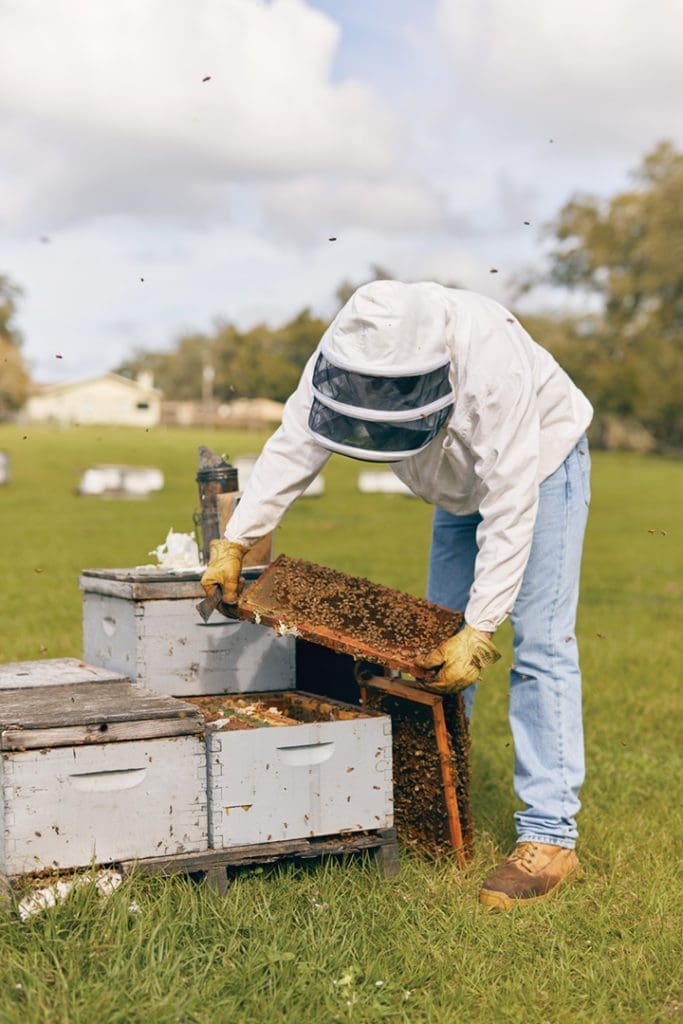
While the state now has 650,000 colonies, it’s a number inflated by the problems beekeepers face, Hackenberg says. They’re likely to lose a third or half of their hives every year, compared to 5 percent of hives that died off yearly when Hackenberg first became a beekeeper. To combat that, commercial beekeepers now split hives far more than they used to, meaning they take half of the colony’s resources to create a new hive, making the production far less efficient.
Think of it like a brewery with a leaky tank that, instead of plugging the hole, just puts less beer in each bottle. It wouldn’t be sustainable for the brewery, and for Florida bees, it might not be enough to save the colonies.
FLORIDA HONEYS YOU NEED TO TRY
GAINESVILLE’S WORLD-RENOWNED BEE EXPERT
Jamie Ellis dreamed he was a beekeeper when he was 8 years old. He doesn’t remember the details, but not long after, he convinced his parents to let him have his own hive.
Was it a premonition that led Ellis down a path to become one of the world’s foremost experts on honeybees? Ellis just doesn’t think that way.
“I’m not big on dream interpretation,” he says to me with a laugh.
After getting that first hive in sixth grade, Ellis started doing science fair projects on honeybees. He was fascinated by how bees think, how they somehow make decisions together and how he could influence those decisions by making small changes in the hive. In high school, he started working with an expert from the University of Georgia, who talked Ellis into majoring in beekeeping in college. He went all the way to South Africa for his doctorate, and in 2006 joined the University of Florida faculty. He now runs the state’s Honey Bee Research and Extension Laboratory in Gainesville, one of the world’s foremost centers for such work.

While in Africa, Ellis began work on researching a tiny mite called the varroa. It’s now one of the biggest threats to honeybees. It’s hard to detect, and, if left unchecked, it can decimate a colony in days.
It’s possible Ellis and his team can figure out a simple solution to killing mites. Consider the case of Swiffer sheets. A few years back, some entrepreneurial beekeeper whose bees were getting overrun with hive beetles dropped a sheet in a colony. The legs of the beetles get caught in the material of the sheets, ridding colonies of the pests. If Ellis gets lucky, the solution to mites, colony collapse disorder and perhaps a hundred other problems facing these insects will be that simple.
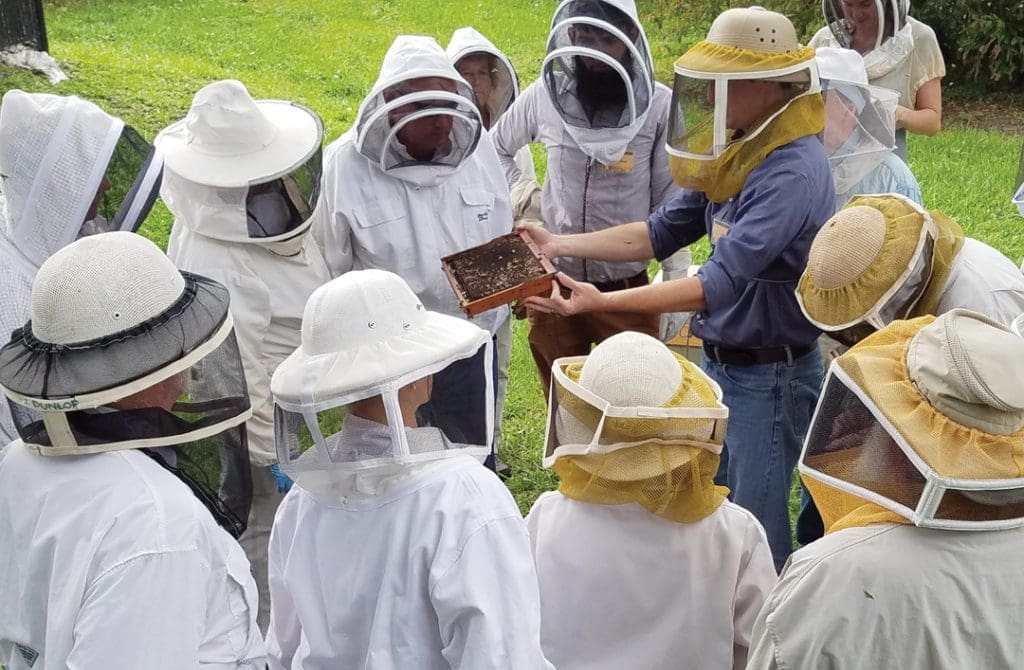
THE MASON-DIXON LINE FOR ‘KILLER BEES’
The origin story of the Africanized bee sounds reminiscent of Frankenstein’s monster, a tale of how science can go terribly wrong. It began in the 1950s, when an apiarist in Brazil had the idea of mating the common honeybee with a variant from Africa that can survive heat but also comes with a bad attitude.
The new highly productive but also extremely defensive strain escaped, and ever since, they’ve been spreading and making their way slowly north, up through Central America, then to Texas and Louisiana.
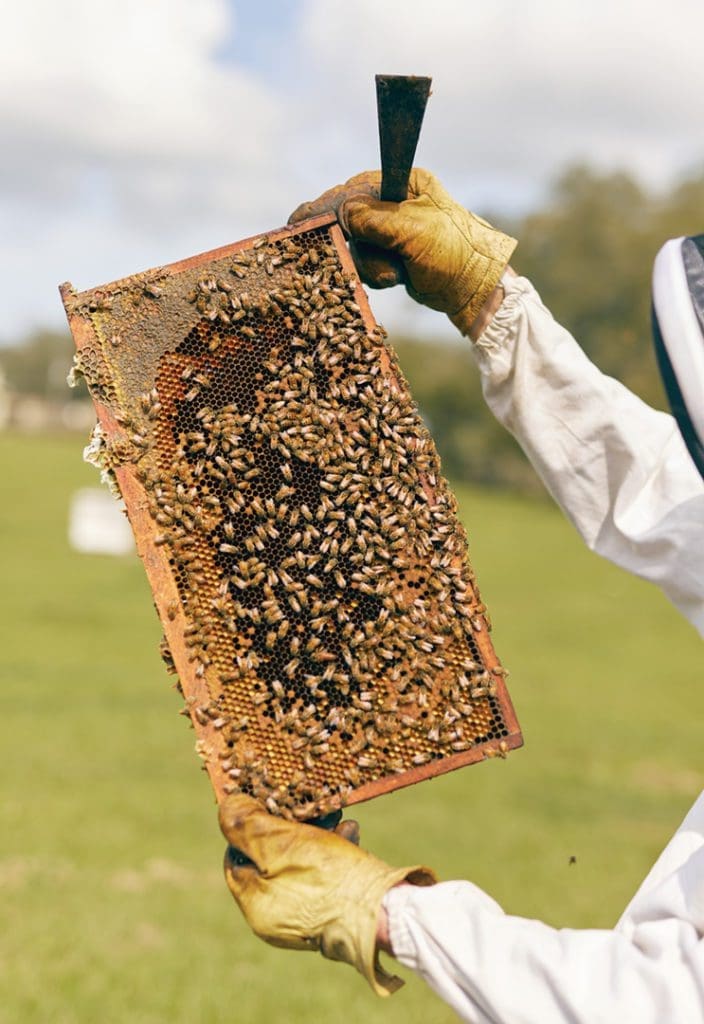
They likely flew onto cargo ships and then made landfall in Florida in the early 2000s. The media called them “killer bees” and a series of headlines starting in 2006 predicted the hybrids would terrorize the state.
The reputation bees got from all those killer bee stories might do harm to the overall effort to save the species. As they already face threats from pesticides, mites and a thousand other issues, Ellis worries that the exaggerated reporting on the problem scared people into seeing all bees as a threat.
In Florida, the Africanized bees rarely mount a severe attack. They largely stopped migrating at the Interstate 4 corridor. That line is also the frost line—meaning the land is unlikely to freeze below it. Above that line, it also rains far more. Perhaps the Africanized bees don’t like a lot of rain or frost.
The Africanized bees could continue north as climate change affects Florida’s frost line and rainfall. For now, though, I-4 has been like a Mason-Dixon Line for the angrier breed. South of it, most or perhaps all of the feral beehives living in the wild are now affected by Africanized hives: Because the queens of commercial and backyard beekeepers will fly off to mate with the males of other colonies, it’s thought that all hives in the southern half of the state could be affected.
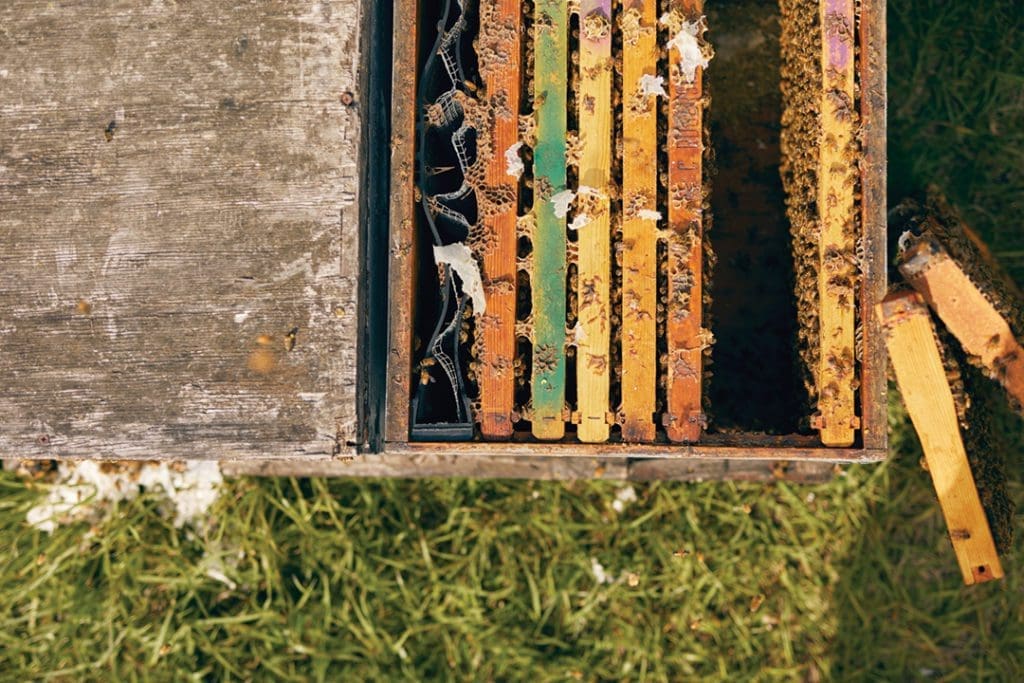
Ellis says it’s impossible to get rid of the Africanized bees, and communities just need educating. He and his team have spent years traveling to schools and working with police agencies to show them how to live with the Africanized colonies, rather than having them exterminated. For most people, the secret to evading a swarm of Africanized bees is simply running away. That’s harder for those who aren’t able to run, and Ellis says it’s those people who usually account for the Africanized bee fatalities.
Ellis says it’s important to remember that bees aren’t aggressive—they’re defensive and won’t attack unless they feel threatened. The average adult can withstand a thousand stings or so before they become potentially deadly, and in all the years he’s been working with bees, Ellis says he’s never encountered a colony that attacked for no reason.
“All of my sting stories sound the same,” Ellis says. “I’ve still never had to run from a hive.”

